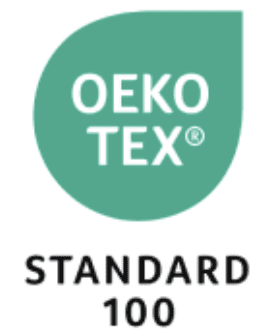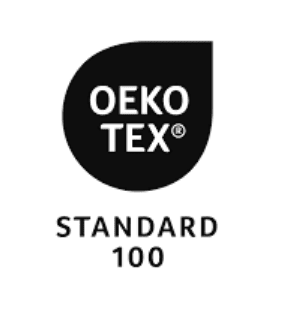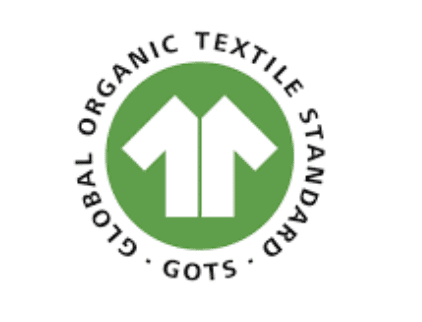TL;DR: Certifications can be super helpful — but they’re not magic shields of sustainability. I’ll show you how to quickly spot the real ones, call out the fuzzy ones, and shop with a little more confidence (and a lot less stress).
Let’s be honest: standing in a dressing room trying to decode a hangtag feels like taking a pop quiz you did not study for.
“Organic.” “Vegan.” “Eco.”
A tiny logo can look trustworthy, but depending on the brand, it might be more marketing than meaning.
The good news? You don’t need a sustainability degree to shop smarter. A few receipts and a 60-second tag check go a long way. Below is your 2025, no-BS guide to what’s trustworthy, what’s trending, and what’s… let’s just call it “creative marketing.”
Why Fashion Labels Got So Confusing: EU Crackdowns, U.S. Rules and What Shoppers Should Know
Here’s the big thing no one talks about: most fashion brands operate globally. When the EU started getting tough around 2023–2024 — banning vague sustainability claims, requiring proof, and pushing the Green Claims Directive — it sent a shockwave through the entire industry.
And honestly? Brands can’t run one honest system for Europe and a looser system for everyone else. That’s expensive, confusing, and just asking for trouble.
So EU rules end up becoming the unofficial global standard.
Meanwhile in the U.S., things are heating up too. The FTC is finally updating its Green Guides for the first time since 2012, and lawsuits around misleading “eco” claims are growing. Translation: greenwashing is becoming a liability.
Put simply: labels got complicated because the world’s biggest markets started demanding receipts — and global brands had no choice but to keep up.
The Most Trusted Fashion Certifications in 2025 — And What They Actually Cover

Not all certifications are created equal. Here’s a breakdown of the “real ones” — the labels that actually mean something.
GOTS Certification Explained: What It Guarantees, What It Doesn’t and How to Verify It
What it is: The gold standard for organic textiles. Think of it as the overachiever: organic farming, strict chemical rules, wastewater treatment, and labor criteria. GOTS 7.0 launched in March 2024.
Why it helps: It checks the entire journey of your fabric — not just the farm.
Limits: Only applies when organic fibers are used. Doesn’t cover a brand’s overall climate footprint.
Who should use this:
- Shoppers who want true organic fabric (not “organic-washed” marketing)
- People sensitive to pesticides, heavy metals, or chemical finishes
- Parents buying organic cotton for babies and kids
Anyone who wants both environmental and labor protections in their clothing
How to verify: Look for the license number → plug it into the GOTS public database.
If it doesn’t show up? Big red flag.
Fairtrade Textile Standard: What It Means for Workers and How to Check It
What it is: The human rights powerhouse — living wages (phased in), safer conditions, worker empowerment.
Why it helps: It covers the “people” side of sustainability that most “eco” labels ignore.
Limits: Not a chemical or fiber standard.
Who should use this:
- Consumers who care most about ethical labor and fair wages
- Anyone shopping for brands with transparent supply chains
- People who want to avoid products linked to exploitation or unsafe working conditions
- Shoppers focused on the social justice side of sustainability
Verify: Search the company or FLO ID in FLOCERT’s directory.
OEKO-TEX STANDARD 100: What It Tests For and How to Confirm a Legit Label

What it is: Tests finished textiles for harmful substances. 2024 updates strengthened PFAS screening.
Why it helps: Great for anything touching your skin — especially babies, kids, or sensitive folks.
Limits: Doesn’t cover farming, climate, or labor.
Who should use this:
- Moms and parents buying for babies and toddlers
- Anyone with skin allergies or eczema
- People who prefer cleaner, low-chemical fabrics
- Sensitive skin shoppers who react to dyes or finishes
Verify: Scan the QR code or enter the number into OEKO-TEX Label Check.
Recycled Content Certifications Explained: RCS, GRS, CCS and Climate+ Goals
What they are: Chain-of-custody and recycled-content certifications managed by Textile Exchange + an industry-wide 2030 climate goal.
Why they help: Confirm recycled content and traceability.
Limits: Recycled ≠ automatically low impact.
Who should use this:
- Shoppers who want verified recycled materials (not greenwashing)
- Anyone trying to avoid virgin polyester or nylon
- Brands focusing on circularity and material reuse
- Buyers who want proof, not marketing claims
Verify: Ask for the transaction certificate (TC) — brands should have it.
Regenerative Organic Certified (ROC): What It Means and When It Matters
What it is: Farm-level gold star for soil health, animal welfare, and social fairness.
Limits: Covers farms only — not processing.
Who should use this:
- Consumers prioritizing soil health, biodiversity, and climate-positive farming
- People who want the highest bar for agricultural practices
- Shoppers looking for both organic and regenerative (not just one or the other)
- Anyone buying natural fibers like cotton, wool, or rubber
Limits: Covers farms only — not processing.
bluesign Explained: How It Keeps Toxic Chemicals Out of Your Clothes
What it is: Manages chemistry at the input stage — before it hits factories.
Limits: Doesn’t cover farming or wages.
Who should use this:
- People sensitive to chemical residues or dyes
- Outdoor gear shoppers (it’s huge in performance wear)
- Anyone wanting cleaner chemistry in synthetics
Parents buying gear for kids who are in close contact with technical fabrics
Cradle to Cradle (C2C) for Fashion: What the Certification Covers and Why It Matters
What it is: A multi-attribute label for materials, circularity, air & climate, water & soil, and social fairness.
Limits: Product-level certification only.
Who should use this:
- Shoppers who want end-to-end impact covered (not just one category)
- People interested in circular design and recyclability
- Buyers prioritizing non-toxic materials and clean chemistry
- Anyone choosing home goods or basics meant to last
Is “Vegan Leather” Sustainable? What PETA-Approved Vegan Does and Doesn’t Tell You
What it does: PETA-Approved Vegan only means no animal ingredients — not that the materials are safe, durable, or low-impact.
Limits: Vegan ≠ sustainable by default. Most synthetics still come from plastics.
Who should use this:
- People whose priority is avoiding animal-derived materials
- Shoppers who are okay with synthetics if they pair with other safety/chemistry certifications
- Anyone comparing bio-based, PU, PVC, and other “vegan” options
- Buyers who want transparency about material makeup
Tip: Pair it with a chemical or processing certification.
How to Read Clothing Labels Like a Pro
A Super Simple 60-Second Checklist
Step 1 — What is the label actually claiming?
Look for real certifications, not buzzwords.
❌ Vague words:
- “Eco”
- “Green”
- “Earth-Friendly”
- “Conscious”
(These mean nothing by themselves.)
✅ Real, checkable claims:
- “GOTS-certified organic cotton”
- “OEKO-TEX Standard 100 certified”
- “Made with GRS-certified recycled polyester”
If it doesn’t name the certification → assume it’s just marketing.
Step 2 — Can you check it in under 15 seconds?
Every legit certification has a public database.
- GOTS: Type in the license number → GOTS database
- OEKO-TEX: Scan QR or enter number → Label Check
- Fairtrade: Search brand or FLO ID → FLOCERT directory
- Recycled (RCS/GRS): Ask for the Transaction Certificate (TC)
(If they can’t provide it… that’s your answer.)
If you can’t verify it → it’s not a certification.
Step 3 — Does the certification match what the brand is promising?
This is where greenwashing hides.
- If they say “GOTS,” the label MUST show:
- % of organic fiber
- Name of the certifier
- % of organic fiber
- If they say “Fairtrade,” it should refer to workers — not fiber.
- If it’s OEKO-TEX, it only covers chemical safety — not labor or farming.
Step 4 — What’s missing? (This is the pro move.)
Most certifications only cover ONE part of sustainability.
So look for what the label didn’t tell you:
- You see chemical safety (OEKO-TEX)… but nothing about workers?
→ Pair it with Fairtrade or check the brand’s labor policies. - You see “recycled”… but no chemical screening?
→ Pair with bluesign or OEKO-TEX. - You see “vegan”… but no info on materials?
→ Ask what it’s actually made of (PU? PVC? Biobased?)
This step is how you avoid half-truths.
Fashion Certifications Are Improving — But Production Is Still Rising (Here’s Why It Matters)
Certifications are getting better. But global fiber production hit a record 132 million tonnes in 2024 — and polyester is almost 60% of that. Fashion’s emissions? Up ~20% in five years.
Better labels help. But buying less and wearing longer still does the most good.
The Ultimate Cheat Sheet to Fashion Certifications (Save This for Shopping)
- Best for organic fiber + clean processing → GOTS 7.0
- Best for worker rights → Fairtrade Textile Standard
- Best for chemical safety → OEKO-TEX STANDARD 100
- Best for raw materials chemistry → bluesign
- Best for regenerative farming → ROC
- Best for circularity → Cradle to Cradle
- Animal-free only → PETA-Approved Vegan
The Two Most Important Labels / Certifications for Fashion
My Shortcut:


If something is GOTS + OEKO-TEX, it’s almost always a great choice.
And remember, certifications are helpful, but they’re not everything. I still look for:
- Pieces I’ll wear 30+ times
- Smart design that lasts (and sheds less)
- Brands that actually share their supply-chain info
At the end of the day, knowledge is power and don’t get fooled by good marketing which is really just greenwashing.

Follow me on my socials:
- Instagram: @lexysilverstein
- Youtube: Lexy Silverstein
- Twitter: @eLEXYfy
- TikTok: @lexysilverstein
- Facebook: Lexy Silverstein
- Liketoknow.it/lexysilverstein
You can email me at LexySilverstein@gmail.com




